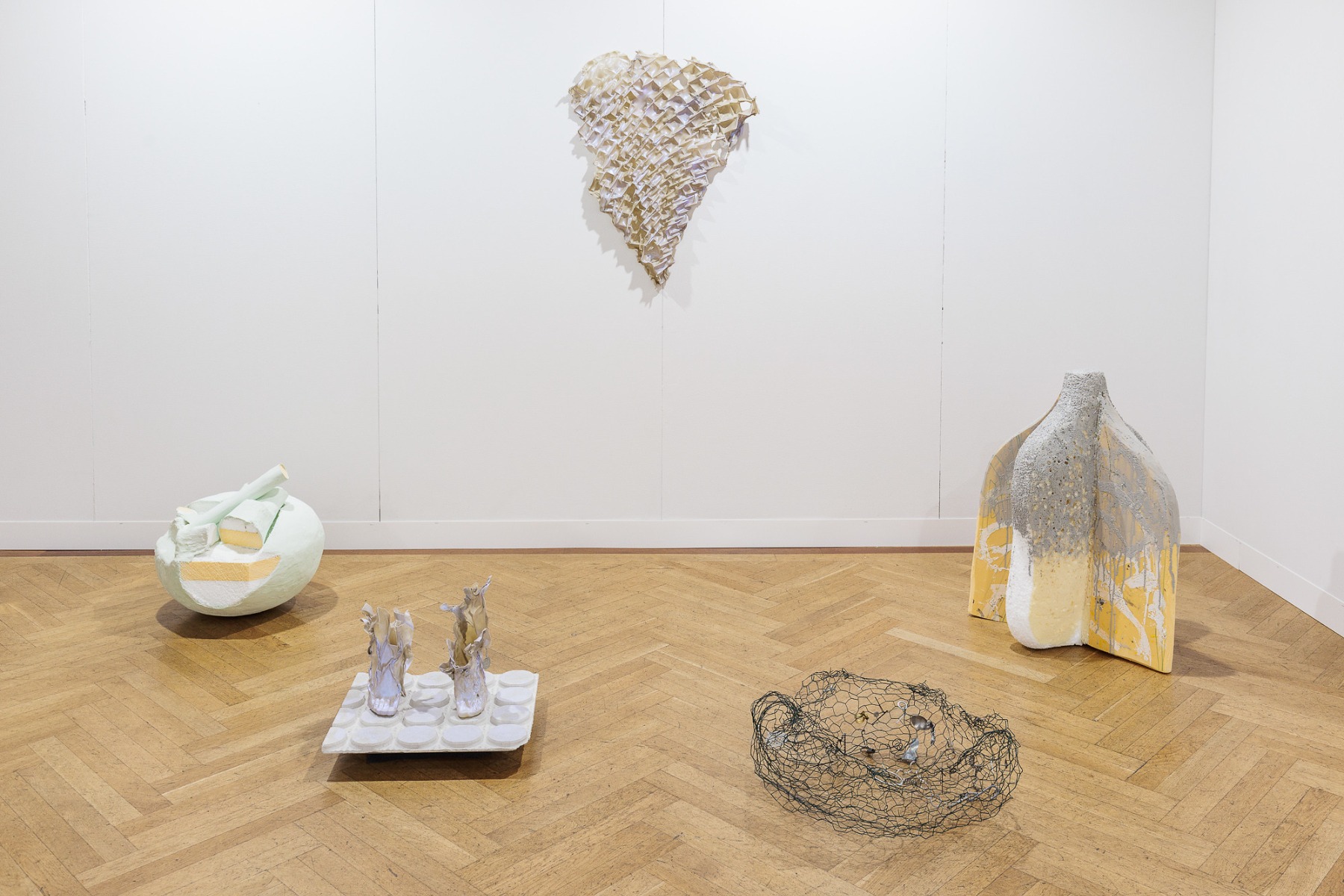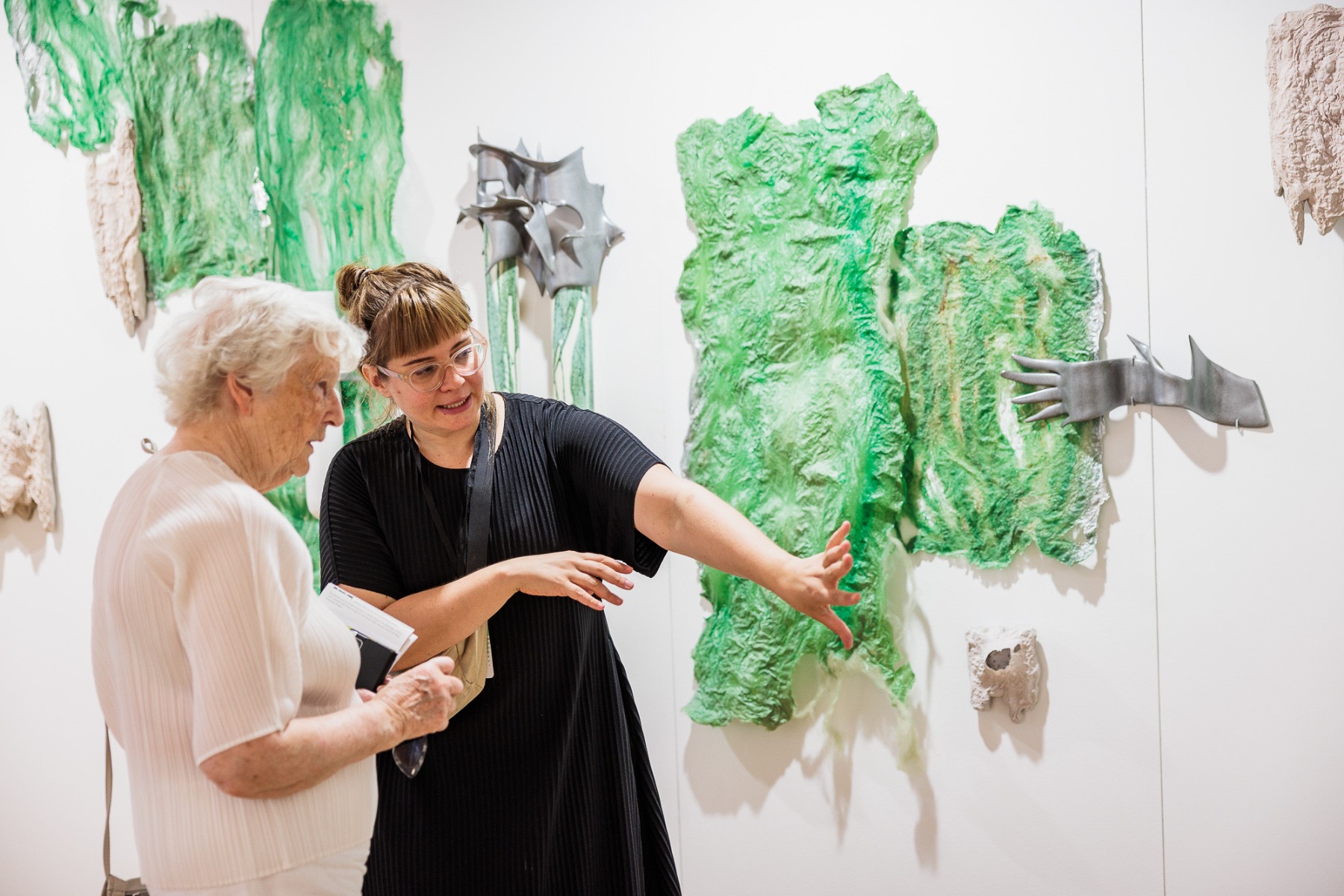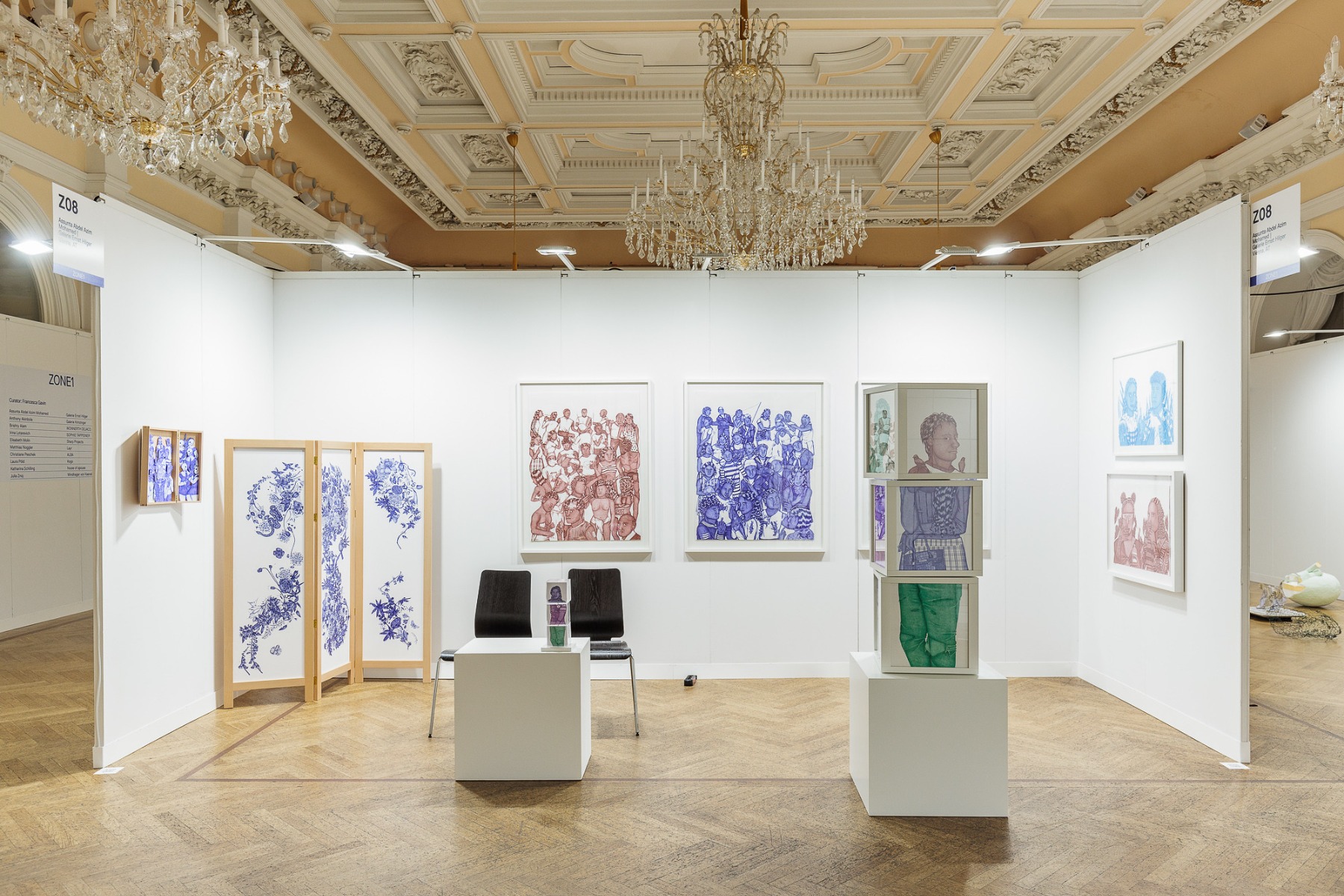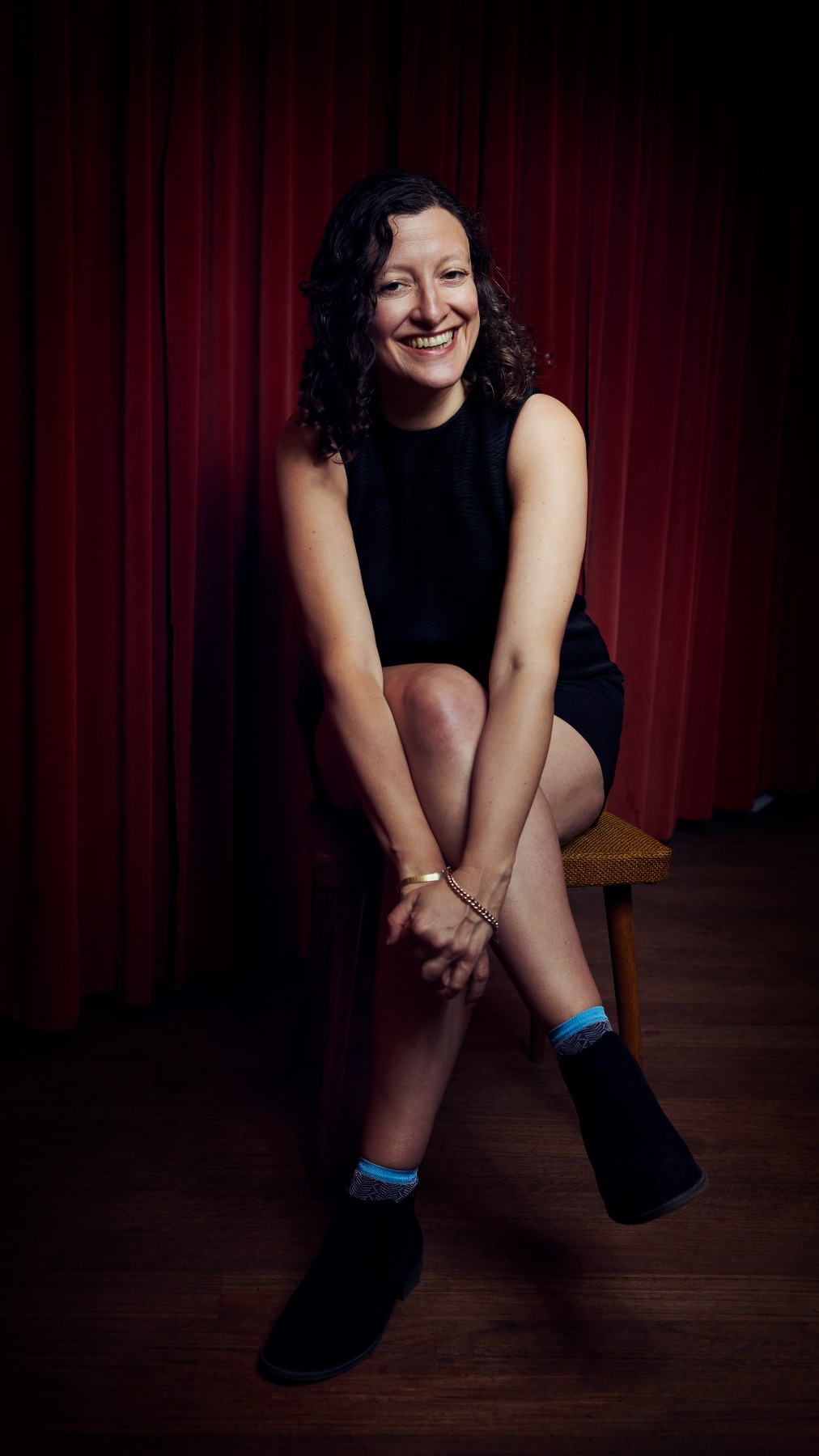
Celebrating Multiculturalism in Contemporary Art
An interview with British curator Francesca Gavin
viennacontemporary 2023, the international contemporary art fair featuring art from Austria as well as Central and Eastern Europe, took place in Vienna at the beginning of September. This year, ZONE1, the part of the fair dedicated to the current Viennese contemporary art scene, was curated by British-born curator Francesca Gavin.
With a territorial location at the crossroads of Europe, Vienna has historically played an important role in European politics, culture and diplomacy. Historically, the city has not only played an important role as a crossroads for European economic exchange and trade but has also acted as a centre for cultural exchange, marking important intellectual and artistic movements. Even in today’s contemporary cultural context, it is at the crossroads of two artistic and cultural spaces – Eastern and Western Europe. Thanks to the two art universities where students of different nationalities converge, several cultures are fused and a new, dynamic and multi-layered energy of contemporary art is emerging.
Artists selected for ZONE1 must be under the age of 40 and must have lived, worked or studied in Austria. In this year’s edition of the fair, the artists represented a particularly wide range of ethnic and national origins, all brought together by the search for artistic expression at one meeting point – Vienna.
Born in London to English and American parents, curator Francesca Gavin also has Russian, Polish, Armenian, Irish and Latvian blood in her heritage; her professional explorations have led her to Vienna, and she continues to broaden her scope ever yet further – What does ethnicity or nationality really mean in today’s global art world? What contribution does a multicultural injection make to the global contemporary art process? What would the fabric of Viennese contemporary art be like without a cross-cultural motif? And how could one describe the future contemporary art landscape currently being shaped by young artists? The following conversation with British curator and art writer Francesca Gavin reflects on these questions.
ZONE1, viennacontemporary 2023, Kursalon Wien. Photo: kunst-dokumentation.com
Last year, ZONE1 occupied one-fifth of the available space on the rough and timeworn basement walls of the Kursalon, while this year it is located under the ornate chandelier on the upper floor of the 19th-century neo-Renaissance concert hall. What is your curatorial approach to crafting exhibitions in different types of spaces, and how do you envision a ‘mutual interaction’ between content and space?
Reflecting on my curatorial experience, I have curated exhibitions in various types of spaces. I organized a show at the Palais de Tokyo in Paris, where the entire exhibition took place in complete darkness, illuminated only by UV light (known as ‘The Dark Cube’ at Palais de Tokyo). In London’s Somerset House, I curated ‘Mushrooms: The Art, Design and Future of Fungi’ within 18th-century domestic spaces featuring fireplaces.
How do I approach these spaces differently? I’ve always believed in working with the architecture. Instead of concealing the structural elements, I prefer to highlight them or engage in a conversation with them. For example, when I curated an exhibition at Horse and Pony Fine Arts in Berlin, a former Dönermanufaktur that was once a butcher shop with original tiles and ornate baroque-style ceiling moulding, I used the architectural features as framing devices for the artworks.
My approach is to collaborate with the architecture rather than oppose it. Yes, it’s challenging, but it’s interesting and fun – just as placing contemporary artwork alongside archival pieces sparks new conversations. Working with a space’s architecture in various ways allows for fresh dialogues with the exhibited artwork.
So, one could say that you prefer venues with a bit of personality.
I do love venues with personality, but I’m a great believer in adapting to whatever the opportunities are. You know, I can also go for a straight and classic approach. In fact, when I curate, I often adopt a linear and classic hanging style, even if the exhibition space is unconventional and crazy. This clean presentation allows the artwork to have ample space.
Here, in ZONE1, I’m very happy with the booth layout. There’s something intriguing about the L-shape design that I particularly enjoy. I really believe that triangles can lead to the most compelling compositions. I’m always fascinated to observe how people approach spatial composition, almost like they would approach a painting.
ZONE1, viennacontemporary 2023, Kursalon Wien. Photo: kunst-dokumentation.com
How do you approach ensuring that an exhibition remains an irreplaceable and essential way of experiencing art – a format that can not be duplicated through any other medium?
I am such a believer in the importance of exhibitions. Firstly, we have very few places in contemporary society where we are surrounded by people from diverse backgrounds and experiences, or even close to other human beings as such. The world has become, let’s say, a little bit more socially insular. We don’t have the same kind of religious structures as we did in the past; for instance, Christianity is on the decline. So, where do we seek the profound? Where can we experience a sense of community? I believe exhibitions are one of the most valuable spaces to facilitate this.
Even though I strongly support the idea of art dissemination through online exhibitions as they can reach a wide audience, nothing can replace the experience of being physically present in a space with an artwork. From a physical standpoint, as a human being in space, how we feel in relation to an object can change everything. And also the conversations that you can create between objects, how we can walk around something... I don’t think you get to experience that anywhere else, except perhaps in nature, when you’re in a forest and walking around a tree. I view an exhibition as a genuinely creative experience.
And I really am a great believer in crediting. I think exhibitions should have credits like they do in films because it’s not a single curator or the artist alone. There are so many others, the entire team that hangs the work – all the people that make the work that goes under the artist’s name. It’s such a collaborative experience – everyone works to make this a beautiful experience.
When asked about how you managed to bring together a generation of emerging artists, your response emphasized that the ten emerging artists in ZONE1 aren’t connected by medium or theme, but rather by their shared approach to nuance. Many of their works prominently feature a strong emphasis on physicality, tactility, and materiality. As an experienced curator, do you believe this approach genuinely represents the most authentic expression of the new generation of artists?
I find that to be quite fascinating. What makes Vienna and this region particularly intriguing is its ability to exist somewhat outside the intense product-oriented focus you might find, for instance, in New York. In places like New York, aesthetic conversations often come with a high degree of marketing and polish due to the need for sales. However, the works we’ve brought together here seem to genuinely reflect the artistic landscape emerging from Vienna at the moment.
There is a diverse range of incredible painters here who were not included in our selection. While painting and two-dimensional work continues to thrive, it’s also worth noting the increasing experimentation in various mediums. The people working with a variety of materials, particularly sculpture, have been sidelined in the past five years because of increased digitization in which we’re relying on a two-dimensional image that can reproduce well on a screen. I see this as a fantastic opportunity to explore a different direction, to shine a light on aspects that have been somewhat overlooked and ignored for a while. So, yes, I genuinely believe this selection offers an authentic representation of the contemporary and emerging artists’ creative landscape here.
Visitors at Austrian artist Christiane Peschek’s booth at ZONE1 at viennacontemporary 2023. Photo: kunstdokumentation.com
In your point of view, how are these artists pointing towards where art is heading? What are these new directions that they’re showing us?
That’s genuinely intriguing because I believe that’s the essence of it. It’s only by examining their work that we can begin to identify new trends and innovative concepts.
I find it quite interesting to examine the relationship between identity and intimacy that goes beyond identity politics. How can we navigate discussions about concepts like feminism, blackness, immigration, being, mental health, or any other issue in a manner that is less didactic and more sensitive, less time-based?
I think this generation of artists is really drawing upon their personal experience in much more subtle, interesting ways. It’s a promising direction for the trajectory of contemporary art. How can we balance the personal and the conceptual more experimentally and subtly? You can definitely see that in the works up there, showcased in ZONE1, because a lot of the time it is about them and their feeling of being them, while simultaneously, their work is addressing much more wider subjects.
ZONE1, viennacontemporary 2023, Kursalon Wien. Photo: kunst-dokumentation.com
Talking about this identity – all the artists participating in this exhibition are connected to Austria to some extent, but many of them have roots elsewhere. How does this aspect challenge the traditional ideas about an artist’s identity being closely tied to their nationality?
I’ll put this in an interesting way, perhaps based on my own experience. I was born in London to English and American parents, but my heritage encompasses Russian, Polish, Armenian, Irish, and Latvian roots. I consider myself Jewish-Irish. So, I’ve always been used to the idea that one’s identity is fluid. It’s shaped by the communities you belong to, the friendships and the environments you find yourself in.
When you think about nationality, it’s quite porous. It’s not solely determined by where you were born. It’s influenced by where you choose to live and the people you decide to engage with. Of course, there are aspects of growing up in a specific location that give you a unique perspective and a nuanced understanding of its subtext.
Austria has a reputation for being somewhat traditionally inward-looking. With my choice of artists, I aimed to emphasize that this perception is evolving and changing rapidly.
A significant portion of Vienna’s population has roots in the former Yugoslavia, including Serbia and Bosnia, representing the entire Balkan region. This diversification is reshaping the concept of Austrian art, making it a dynamic and vital scene. It’s becoming increasingly interesting and appealing to a more international audience.
How significant is the level of activity among institutions and initiatives in Vienna when it comes to effectively showcasing the diversity of artists and international talents connected to Austria’s art scene?
I think there’s a lot! I mean, you’d be amazed. I’m a huge fan of the project space scene here. Independent Space Index is an incredible website that lists all the project spaces. They even have a festival in June. This surge is largely due to the increasing number of people coming to study at the art schools here, resulting in a rich diversity of nationalities.
I believe that both the Secession Building and Kunsthalle Wien are two institutions that are increasingly making the breadth of artists and international talents connected to this country more visible. It’s a fundamental aspect of both of their programmes.
ZONE1, viennacontemporary 2023, Kursalon Wien. Photo: kunst-dokumentation.com
Meanwhile, London is superior in its celebration of different cultures…
London probably is one of the most multicultural cities you’ll ever encounter, except perhaps for Toronto, which surprisingly shares this multiculturalism. The fabric of the city is totally based on people who’ve come there from somewhere else. This melting pot of cultures contributes to what makes London’s culture. And London has greatly benefited from this diversity in many ways.
In contrast, Paris, for example, has more noticeable issues with segregation and disparities, particularly between the city and its banlieue (suburbs), unlike London, where integration is more deeply ingrained. After World War II, many buildings were knocked down in London, so later it led to the coexistence of council blocks and private homes side by side, which fostered integrated classes and cultures. Additionally, London’s multicultural character is rooted in its colonial history. Britain went everywhere throughout the 19th century, prompting people from various regions to come to the UK. But I think London has been very smart in integrating that diversity within its art scene. British music, for instance, owes its existence to the Windrush generation and the subsequent Afro-Caribbean influx – it wouldn’t have been the same country without their contributions.
Even if we look back to the 18th-century British cultural landscape, we find the impact of the Huguenots, who arrived from France. European history, in its broadest sense, is indeed characterized by migration and the blending of cultures.

Continuing this discussion on how the young global artist generation is shaping both local and global art scenes, let’s explore their possibilities and opportunities. There’s a lot of discussion in the art world about supporting new artists. It’s like everyone’s saying young and new artists are the heart of it all. But how does that actually play out in the real world? How do you see this time for new artists?
When you examine the art market, it appears that emerging and highly established artists are the two segments performing exceptionally well, at least from what I’ve gathered over the past few years.
Collectors can experiment with artists at an emerging price point. And there’s often much more opportunity for investing in someone who ends up doing incredibly well and making a huge profit. It’s also a very good entry point, I think, conceptually for people who want to grow a relationship with an artist as they develop.
I believe that emerging artists hold a significant place in the art market, possibly even more than artists in the midsection. Internationally, we are witnessing increased investment, particularly in the realms of emerging artists or what one might call ‘hyper-blue-chip’ artists – those who fall somewhere between the early stages of their career and the stature of established artists like Matisse.
I believe that people tend to get more excited about emerging artists, as it brings a genuine sense of discovery. For younger collectors, it often makes more sense as they can better grasp the languages, conversations, and reference points within emerging art.
Estonian artist Laura Põld at Kogo Gallery’s booth at viennacontemporary 2023. Photo: kunstdokumentation.com
And what are the main obstacles for the young artists entering the art market?
Oh, that’s huge. Firstly, to find a gallery that can support you. And often that’s based on the medium and the people taking the risk to show your work. There’s a reason why painting has flourished for a lot of emerging artists – because it’s easier to sell.
Secondly, the availability of space and affordable studio spaces, as well as affordable rent and financial opportunities, play a crucial role. I believe Austria is uniquely positioned in this regard due to the distinctive nature of its housing market, which still allows people to afford living here. In contrast to Berlin, where people cannot afford to live in the same way anymore. The global housing crisis is having an extreme impact on the possibilities for creating art, showcasing art, and selling art.
So, I think that it always comes down to economics and economic possibilities. Also, state support, like there is in certain European countries, is much more able to support artists with grants as well as by buying their work for public collections. If you get into more neoliberal countries, let’s say America and Britain, that safety net doesn’t exist. So, artists have to do different work in order to survive.

What’s your perspective on the opportunities for emerging artists in Eastern Europe?
There’s a real desire to explore lesser-known conversations and delve into the vast legacy of late modernism and contemporary work from the eastern part of Europe that has remained hidden. People are curious, and everyone’s always looking for new and fresh dialogues. So, I believe we are in an excellent position to embark on exciting endeavors here.
That’s why I’m excited about how viennacontemporary is growing and creating more space for the region’s galleries to be seen. Even when some eastern countries don’t provide national support for their galleries to participate in international fairs, I believe this fair can take steps to address the situation. Also, with a larger location for next year, they’ll have the space to do that. I think there will be a lot more opportunities to grow the relationship with Eastern Europe again. And I think that can be really exciting! You can see it with Manifesta 14 in Prishtina; you can see it with the success of the last two Riga International Biennials of Contemporary Art (RIBOCA) in terms of international attention – there is a real desire for this.
This becomes especially relevant in the current political climate, with the situation involving Russia and Ukraine. Austria has the potential to offer both space and attention to Eastern European artists and galleries.
Considering the various cases of socio-political and economic turbulence occurring worldwide, how can fairs like this one contribute to the world of art in general?
I think it has taken time for people to adapt to the changing circumstances, especially coming out of the COVID-19 pandemic and regarding the ongoing geopolitical challenges. We’ve experienced a period of recalibration, both on a national and international level. And we’re still in a moment of deep climate crisis, but despite all this, this is a moment when new structures and opportunities can begin to emerge. In this regard, Austria is exceptionally well positioned to provide the necessary space for this art to gain visibility and flourish.
***
Francesca Gavin, curator of ZONE1 at viennacontemporary 2023. Photo: Courtesy of Francesca Gavin
Francesca Gavin holds the reins as Editor-in-Chief of EPOCH, a biannual publication that delves deep into the fascinating crossroads where history and contemporary culture converge. Her words find homes in publications like the Financial Times HTSI Magazine, Kaleidoscope, Twin, and Beauty Papers. She is also a storyteller who has penned ten captivating books on visual culture.
Her influence extends far beyond the written word. As a curator, she has woven her magic at prestigious venues like Manifesta11, the European Biennial of Contemporary Art, the Palais de Tokyo, Somerset House, and Fondacao Serralves. She is also the visionary who founded the Soho House collection, which has amassed a treasure trove of over 3,000 works to date.
Title image: Francesca Gavin, curator of ZONE1 at viennacontemporary 2023. Photo: Courtesy of Francesca Gavin